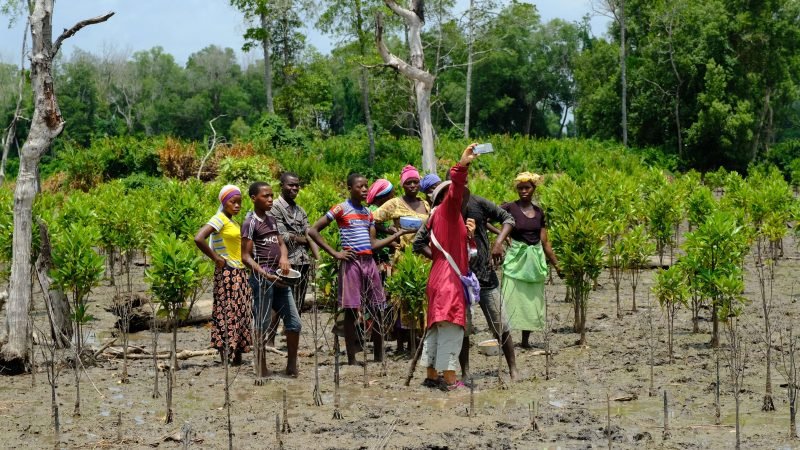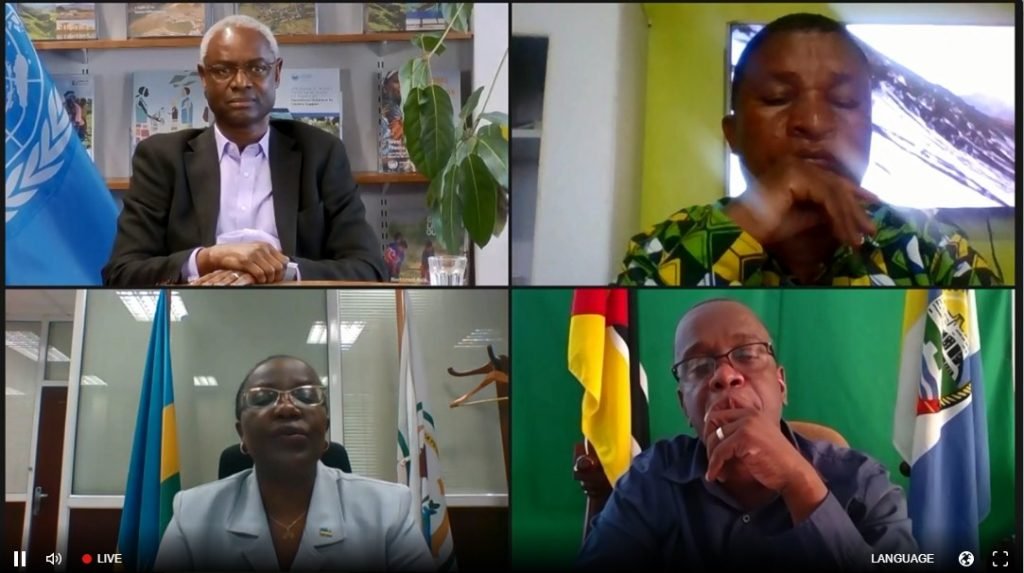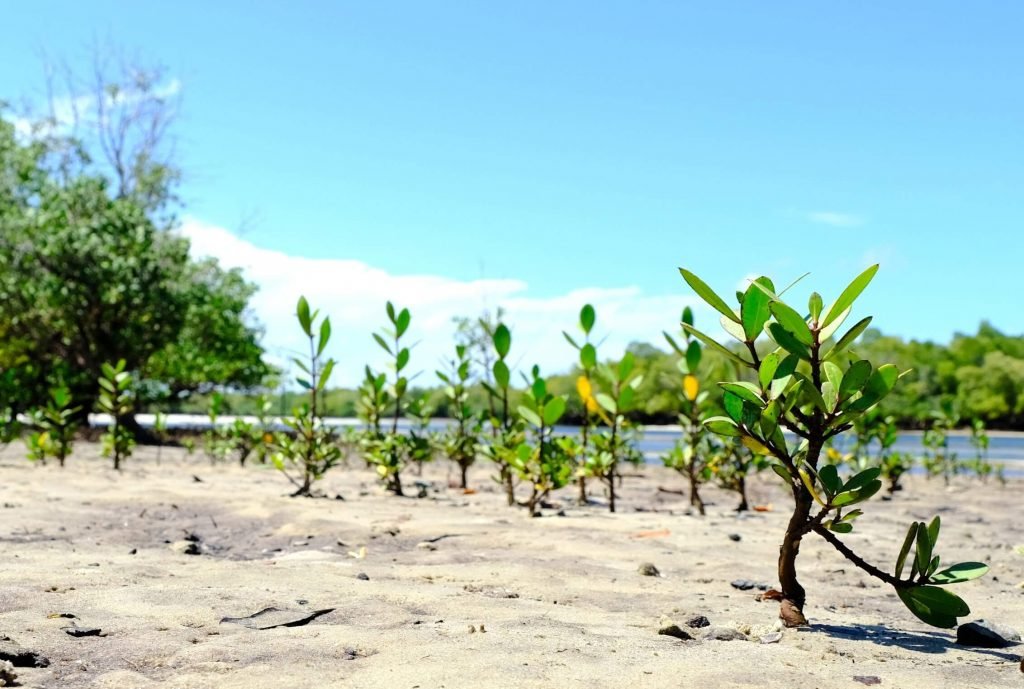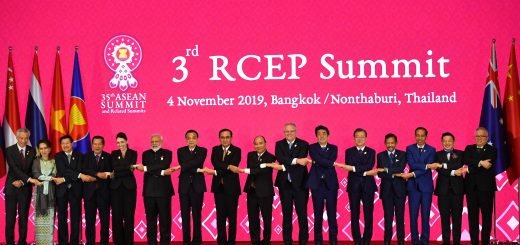World Wetlands Day and the Proposed Solutions at the Climate Adaptation Summit

Accelerating adaptation to climate change in harmony with nature
The first summit specifically on adaptation to climate change organized by the government of the Netherlands and the Global Center for Adaptation managed to tune into the same forum in the United States and China to advance a common agenda in the face of this enormous challenge. Dialogues on adaptation and development for Africa, nature-based solutions from Asia and new principles for local adaptation in the most vulnerable countries, among the main topics discussed.
The pandemic did not prevent the ambition to increase climate action from being debated at the Climate Adaptation Summit 2021 (CAS). Despite the initial focus on the high politics of leaders, philanthropists and representatives of international organizations, the proposed solutions had much more to do with local-based sustainable development policies and restoration of ecosystems such as mangroves, key to adaptation to a changing climate fraught with risks.
With Kristalina Georgieva, CEO of the IMF, assuming that climate change is a critical risk to economic stability, and Antonio Guterres, UN Secretary General, throwing out truly alarming figures: according to the World Meteorological Organization, there have been more than 11,000 disasters due to to weather, climate and water-related hazards over the past 50 years at a cost of about $ 3.6 trillion. Extreme weather events and climate-related hazards have also killed more than 410,000 people in the past decade, the vast majority in low- and lower-middle-income countries.
Speeches included John Kerry, the US Special Envoy for Climate, celebrating his country’s reincorporation to the Paris Agreement and recognizing that today it is more profitable to invest in disaster reduction than in post cleanup catastrophes, and that the best way to adapt is to treat the climate crisis for the emergency that it really is. Likewise, that of Han Zheng, Vice Premier of the People’s Republic of China, bet that the summit collaborates in the construction of consensus for global cooperation in adaptation and the intention of his country to achieve carbon neutrality before 2060.
Alberto Fernández, President of Argentina, spoke of increasing resilience and reducing the vulnerability of the most vulnerable sectors, in addition to integrating the gender dimension in their problems. For her part, the Prime Minister of Bangladesh, Sheikh Hasina, referred to her country as the ‘ground zero for adaptation’ to climate change, and Vietnamese Prime Minister Nguyen Xuân Phúc denounced the divergence of funds for climate adaptation due to the pandemic and its consequences. Frans Timmermans, First Vice-President of the European Commission, was more energetic and spoke of ecocide and the need to establish solidarity beyond the health emergency in which we find ourselves.
In a context where the United Kingdom has just launched the Adaptation Research Alliance (ARA) ahead of COP26 that will take place in Glasgow at the end of the year, a recent UN report warns that if While nations have made progress in planning, there are still huge gaps in financing from developing countries, leading to adaptation projects not yet at a stage where they provide real protection against climate impacts, such as droughts, floods and rising sea levels.
Africa Cannot Develop Without Adaptation
According to Akinwumi Adesina, president of the African Development Bank, Africa’s growth is compromised due to climate change due to the plagues in the east of the continent and the more frequent and severe droughts. Adesina remarks that from his agency they managed to quadruple the available funds, to reach 25 billion dollars in 2025. They aim to achieve the largest solar farm in the world and build the Great Green Wall to stop desertification in the Sahel.
To delve into the debate of one of the key events of the CAS, the Climate and Development Knowledge Network has launched a working paper which concludes that, as elsewhere around the globe, bringing adaptation to scale in Africa does not mean straightforward replication of adaptation solutions from one locality to another. Given the immense diversity in geo-physical, ecological, social and cultural settings across Africa, adaptation solutions must, naturally, be locally-appropriate and locally-owned if they are to succeed.
Wanjira Mathai, Vice President and Regional Director of the World Resources Institute Africa, pointed out that water, agriculture and resilience are the most affected sectors – especially with three quarters of the continent’s population under 35 years old – while Josefa Sacko, Commissioner for Rural Economy and Agriculture of the African Union Commission, remarked that an adaptation initiative is currently being sought at the continental level, and for that they are working with the Agenda 2063 road map.

In a four-voice exchange, Jeanne d’Arc Mujawamariya, Rwanda’s environment minister, demanded more funding for adaptation works; Daviz Simango, mayor of Beira in Mozambique – who two years ago suffered the damage of the devastating Hurricane Idai – shared lessons on preparedness and early action against floods and new phenomena such as cyclones; and Ibrahim Thiaw, UN Executive Secretary Against Desertification remarked that the land remains the largest absorber of carbon we have and that the Sahel is not the only region affected by land degradation; it is half of the African continent. Finally, Mithika Mwena, CEO of the Pan African Climate Justice Alliance, denounced that climate change was not caused by Africans, but by developed countries and that a relief of sovereign debts due to the pandemic is key to African prosperity of COVID-19 so they can invest in climate adaptation.
Abdoulaye Dia, Secretary of the Pan African Agency for the Great Green Wall announced that they hope to restore 100 million acres of land in the coming years on a platform that includes women and youth. Kulthoum Omari-Motsumi, Special Adviser for the Africa Adaptation Initiative, spoke of the need to increase the budget for adaptation activities from the current 2% of GDP, the need to generate more data on climate reality and called for private contributions to the state. The Dutch Climate Fund considered it appropriate that public finances distribute the budget equitably between adaptation and mitigation policies.

Building Together With Nature in Asia
Another major event during CAS had to do with nature-based solutions (NBS). The Executive Director of the United Nations Environment Program, Inger Andersen, said that “we are not doing enough, and that we need a lot more action to ensure adaptation is properly funded: 1. finance (5% of global climate finance is not enough), budgets should not get us back to where we were before the pandemic, and that NBS should be referenced in COP26, as today only 17% of NDCs include these. Investing in nature so that it can protect itself and us as well”.
Carlos Manuel Rodriguez, former Minister of the Environment of Costa Rica and current CEO of the Global Environment Facility, spoke of the exemplary carbon tax applied in his country and the importance of the SBN as one of the most accessible alternatives to obtain financing for small rural communities through carbon credit schemes.
Anne-Marie Trevelyan, a reference for Adaptation and Resilience for the United Kingdom, closed the event by announcing that the British government will seek to allocate more funds to SBNs at the next COP26, since they barely represent 3% of the total global budget, and that the ARA is part of the efforts made this year to achieve significant change.
The NGO Wetlands International participated in the summit through a parallel event entitled ‘Building together with nature in Asia’, where they highlight the case of Demak, in Indonesia, with ecological restoration of mangroves by restoring the biophysical and socioeconomic conditions so that the mangroves grow back naturally.
Dan Friess, Associate Professor in the Department of Geography and Co-Director of the Center for Nature-Based Solutions at the National University of Singapore, further explained that “mangroves are an ideal nature-based solution to climate change, because they absorb our carbon emissions, but they also help us adapt to the impacts of climate change by protecting us from increased storms. We have a growing idea of the science around nature-based solutions, but implementation needs a strong understanding of policy and decision-making”
The Principles for Local Adaptation
A third event that also gained centrality had to do with ‘The principles for local adaptation’, launched in response to the devastation suffered by the most vulnerable in the context of the climate emergency and the poverty to which millions more will be pushed due to the economic consequences of the pandemic.
The International Institute for Environment and Development (IIED) has highlighted good examples of local climate finance in Zimbabwe and Brazil, but also found that less than 10% of global finance is earmarked for local action. That is why it supports this initiative – together with 40 other governments, think-tanks and NGOs – of eight principles that seek to serve as a guide to change the banner of policies planned from above and thus raise climate finance from below and with the people. who knows exactly where funds should go.
Andrew Norton, Director of IIED, explains in a press release that “the world is going through the interconnected crises of the climate crisis, rapid destruction of biodiversity and an entrenched poverty, and therefore climate adaptation is central to transforming societies and ecosystems. These principles presented here are an opportunity to place the most affected and informed voices at the forefront of climate action in the face of the Biological Diversity Summits in Kumming (China) and COP26 in Glasgow (UK) ”.
Towards a Decade of Action on Adaptation: Will Cities in the Global South be Resilient?
In the event dedicated to resilient cities, the summit focused mainly on first world cities. However, it did leave room for a brief intervention by Mohammed Adjei Sowah, Mayor of Accra, Ghana. who spoke of plans for carbon control and flood protection – nurtured by his membership in the Network of 100 Resilient Cities.
Faced with the omission of other well-known environmental problems in this West African city, the Ghana Youth Environment Movement (GYEM) comments that “although the Mayor has taken valuable steps through the Accra Climate Action Plan , your government has earmarked the mangrove site at Tse Addo to be converted into a residential and recreational center. Furthermore, the government’s decision to convert Cantonment’s Parks and Gardens headquarters into an office complex is a highly questionable initiative. The mayor must also demonstrate his commitment to protecting Accra’s forests and biodiversity hotspots ”

The first adaptation summit concluded loaded with unusual optimism with the launch of an agenda for 2030. Hopefully its next edition, as well as COP26, will have more space for the various climate justice movements, which are the roots of resilience that are already sprouting to adapt to the future.


















